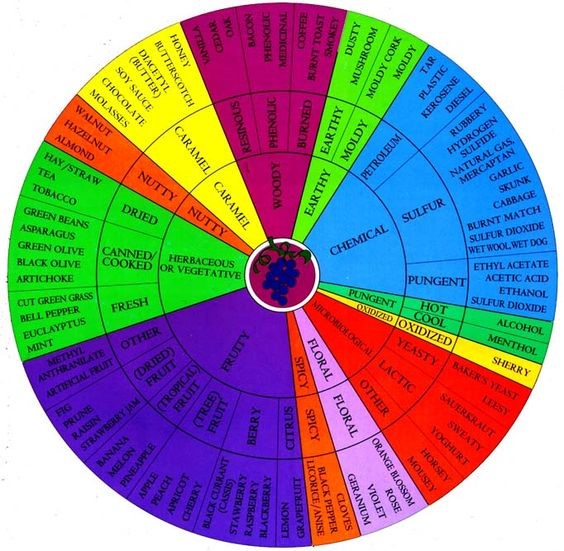The Flavor Profile Analysis Used in Wine
By Wenchuo Yao, PhD student of Civil & Environmental Engineering and Water IGEP of Virginia Tech.
“A person with increasing knowledge and sensory education may derive infinite enjoyment from Wine.” – Ernest Hemingway
With over thousands of years’ of history, wine has become a significant part of human culture. There is a unique aroma and taste in each wine varietal, and we want to reveal the science behind it. There are “5 S” in wine tasting: see, swirl, smell, sip, and savor (professionally speaking, spit is the last step, to avoid misjudgments due to excess consumption of alcohol). The flavor of wine is different, due to different geographic origins around the world, aging process, treatment process, and sometimes even the temperature of the wine when you taste it. A combination of alcohol, tannin, sweetness, and acids form the basic structure of wine body. Alcohol comes from the fermentation of grapes, where yeast consumes the sugar of the grapes. The resulting alcohol by volume (ABV) often ranges from 5% to 23%. Tannin comes from the skins and seeds of the grapes, resulting in red wines having a higher tannin concentrations than white wines. Sweetness comes from the residual sugar after fermentation. Typically, wines with <10 g/L of sugar are considered dry. Acids, with normal pH range of 2 to 4, comes from the grapes or artificial addition that helps with fermentation. The four fundamental traits listed here cummulate into the wine what we smell and taste. Moreover, water may cause the change in flavor as well. For example, grapes tend to accumulate sugar when there is a water stress (less water available than needed) when the grapes are growing. Thus, the wine made from the grapes that experienced water stress usually has a sweeter taste.

When it comes to wine, personal preferences vary a lot, but the evaluation of smell and taste can be objective. Usually, a scale of dry to sweet is shown on the label of wine bottle so consumers would have an overall idea of the taste of the wine before buying it. However, the flavor of wine cannot be estimated only by dryness or sweetness. The use of wine flavor wheel is very helpful when you want to describe the specific smell/taste. In the wine wheel (different versions may exist), flavors are specified into 12 categories in the inner wheel, further specified in the middle wheel, and it provides detailed descriptors in the outer wheel. The four fundamental traits contribute different smells and tastes in wines, and form the final complex flavor when we taste them. For example, in a study of Merlot wine, researchers found that the tannin showed greatest impact on the flavor descriptive analysis, including increased sourness, bitterness, drying, and overall astringency. Meanwhile, acidity significantly increased the perception of sourness and decreased bitterness, and ethanol showed no significant impacts on the taste (Frost et al., 2017).
Table 1 summarizes common chemicals in wine related with flavor descriptors, and representative wines on the market. Alcohol provides a slightly burning/pungent sensation as well as viscosity. The higher ABV level, the more heat we would experience in the mouth. Tannins provide bitterness, which is a key component of dryness. Since red wines have a higher tannin concentration, they tend to taste drier. However, oak chips contain tannins, therefore white wines aged in oak barrels can taste drier than those not aged in the same manner. Tannin is also a key component of full-bodied[YW1] wines. The balance of dryness and sweetness is essential in terms of good wine. Typically, high sweetness wine tend to be low in ABV level, since alcohol is a byproduct of fermentation from sugar. Acids add sourness and a refreshing taste in the wine, which can make you want to sip more. Besides, other additives can be added to obtain better fermentation, such as sulfur to kill unwanted microorganisms. Cork tainted wines taste like a dank basement or wet newspaper/dog, which occurs when the microorganisms such as fungi create the unpleasant smell. [YW2] In wine and water flavor research, trained people will smell and taste the liquid, and then rate the intensity of the smell and taste based on the flavor wheel.
The composition of wine and their resulting flavor is very complicated, and it is a combination of aroma and tastes, resulting from interactions of each chemical compounds. After reading this blog, do you need a glass of wine to taste and describe?
Reference
Frost, S. C., Harbertson, J. F., & Heymann, H. (2017). A full factorial study on the effect of tannins, acidity, and ethanol on the temporal perception of taste and mouthfeel in red wine. Food quality and preference, 62, 1-7.


